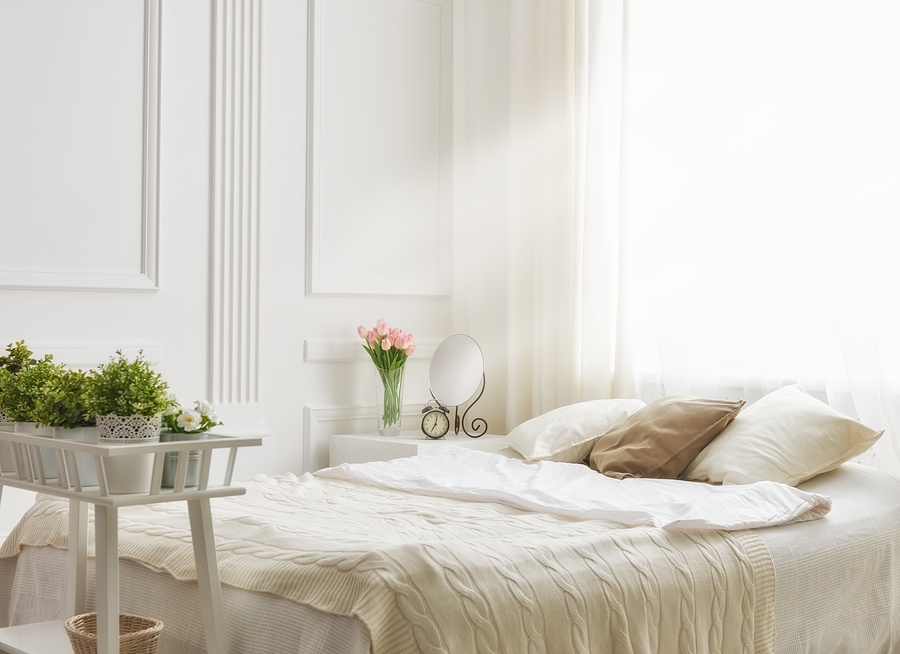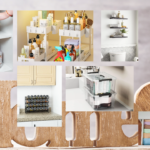| Getting your Trinity Audio player ready... |
Are you relocating for a remodel or a temporary situation? Here are some pointers on what to bring and what to leave at home.
One of the most important decisions you’ll have to make during a home renovation is how to live through it the best way possible: Is it better to stay and try to live around the inconvenience or should you leave? If you decide that leaving your home is the best option, there are a few things you can do to make your time in a temporary residence go more smoothly.
The same advice applies to dealing with a temporary living situation that isn’t related to a home renovation, such as choosing to stay in a rental while waiting to move into a new home, or as a college student returning to your parents’ home for summer when your old space has now been repurposed into something else, and you will now be living in ‘guest’ space.
What to Pack for Your Temporary Residence
Sometimes you know how long you’ll be staying and how much space you’ll have, but other times your stay may be extended in temporary quarters that are smaller and for a longer period of time than you anticipated. It’s best to pack as little as possible for your temporary living quarters. This is not only because you’ll have to pack it up again, but also because having too many items in your new space can make it feel cluttered and unmanageable, and you don’t want to spend too much money on a temporary space.
Depending on your situation, you may be packing two sets of items: some to take with you and others to store, perhaps to rent out your home or empty it in preparation for a full remodel.
Clothes.
Think about the different types of weather and seasons you might encounter in your new location. If your clothing requirements differ from what you’re used to, you might want to wait until you arrive in your new town to learn what works best there from locals.
If space is limited and your stay will last more than one season, you may want to consider rotating seasonal items such as heavy winter coats during the summer and your summer wardrobe during the winter, if that is feasible.
Laundry is another factor to consider. Is there a washer and dryer in your temporary housing, or will you have to go to a laundromat? Will your new surroundings and activities necessitate more or less washing? The answers to these questions may have an impact on how much clothing you’ll need to keep you going between laundry days.
Housewares
While most furnished rentals include major items such as sofas, beds, stoves, refrigerators, dining room tables and chairs, some may not include microwaves, televisions, or washers and dryers. When you visit your rental, make an inventory list or ask your new landlord for one, so you can decide which housewares and appliances to bring. You should double-check the type and quantity of cookware, bakeware, and utensils, even if they are listed on the inventory.
Décor.
If you’ll be staying for more than a few months, a few decorative items will help you feel more at ease. Consider bringing a throw, a couple of favorite decorative pillows, framed photos, a vase or two, and meaningful artwork that is small and portable. When you personalize your space a little, you’ll find that you’re happier and more productive.
What to Avoid Bringing to Your Temporary Residence
Important documents and valuable items.
Keep track of your most valuable and important items and documents, including family heirlooms, expensive and sentimental jewelry, passports, birth certificates, real estate deeds, and tax documents. It’s easy to lose track of which box certain items were packed in and where that box is among the many you send to storage. (Not to mention that labeling any boxes “important documents” or “valuables” may make them targets for thieves.)
Ideally, a family member or friend could store some of your belongings in his or her home safe for you. Alternatively, you could store these items in a bank or private company’s safe deposit box.
If none of these options are available, bringing valuables with you is still preferable to storing them in a storage unit. However, keep in mind that in a rental, the landlord has unrestricted access to the apartment.
How to Stay Organized in a Temporary Living Space
Moving to a smaller space can be difficult because you may need to develop new habits in order to get things done around the house. You might not have a dedicated home office where you can make business calls or multiple bathrooms to make morning routines go more smoothly.
If your space is too small, or you’ve lost garage space, you may have to forego bulk warehouse purchases for the time being. For your temporary stay, your goal should be to create a space that is streamlined, efficient, and functional.
Sort your belongings into categories based on how often they are used.
When organizing your new space, put your most frequently used items in the most accessible locations. If you only bake once a month, for example, keep your baking supplies on the top shelf of the kitchen cabinets and keep your salad spinner on the lower, easier-to-reach shelves. It’s more efficient to store the party mugs elsewhere and use the prime shelf space for everyday items if you only use four mugs daily but keep 12 on a kitchen shelf for occasional parties.
Outside of the kitchen, the same principle applies. Toiletries, towels, and pajamas, for example, should be more easily accessible than suitcases, formal attire, or holiday decorations for many people. While I wouldn’t recommend bringing the entire holiday season to a temporary location, having a portable selection of decor — like Christmas stockings or a Hanukkah menorah — will allow you to keep your traditions going no matter where you are.
For extra storage, consider using temporary furniture.
A freestanding kitchen cart or bookcase may help if you still don’t have enough space. However, consider whether any cost is worth the convenience the furniture will provide, as well as the cluttered feel that extra furniture in a small space will create.
How to Make a Makeshift Accommodation Feel Like a Home
Keep in mind that most rental agreements prohibit alterations to the property, such as putting nails or hooks in the walls or changing the paint or wallpaper. That’s fine; you can still appreciate art when it’s on a mantel or a side table.
When used as directed, museum or earthquake putty will help keep the artwork from sliding or falling over. Consider using damage-free removable hooks or picture hanging strips if you really want to hang something on the walls. If you go this route, make sure to follow the wall preparation instructions to the letter and stick to the recommended weight limits to make sure the hooks or strips work as advertised.
Alternatively, even if you don’t bring any specific decor, your home can still feel warm and welcoming. Consider how you can decorate with commonplace items. Plants can help to personalize a space by adding dimension and character. A colorful and pretty centerpiece for your dining table is a serving bowl filled with fruit.
Although it’s nice to have, decor in a temporary space is entirely optional. Think about how long you’ll be staying, how far you’ll be moving, and how big or small your new space will be. Small, portable, and durable items are, of course, the most convenient to transport.
Need help organizing any living space, temporary or otherwise? Just Organized by Taya can help. Book a free 15-minute Zoom consultation here, so we can chat about your needs and just how we can help you.
- Top 10 Tips for Linen Closet Organization - October 16, 2025
- The “House Purse”: The Viral Trend That Proves Organization is Self-Care - October 14, 2025
- A Mental Health Month Guide to Decluttering Your Life (And Your Home) - October 9, 2025






